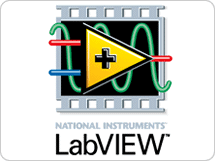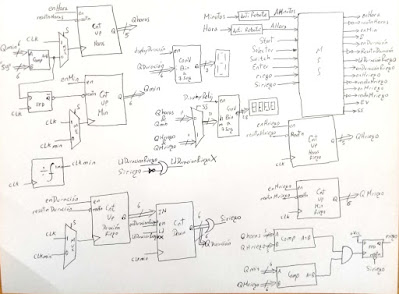▷ Raspberry Pi-based IoT for Shrimp Farms Real-time Remote Monitoring with Automated System
- Keywords➡️: #EmbeddedSystems #ARM #Python #CProgrammingLanguage #AVR #Esp32 #Espressif #IoT #CyberPhysicalSystem #SensorNetwork #WirelessSensorNetwork #Processor #Arduino #RaspberryPi #FreeRTOS
- ⭐ https://github.com/vasanza/EmbeddedSystems
- ✅ APPEL 2021: 26th International Conference on Applied Electronics, AE #APPEL2021➡️ Presented by: Jesús Capelo & Erick Ruiz
- ⭐ When using this resource, please cite the original publication:
- ✅ Abstract:
- This project analyses the optimal parameters for the shrimp farming, trying to help the aquaculture of Ecuador, using a cyberphysical system, which includes temperature, salinity, dissolved oxygen, and pH sensors to monitor the water conditions and an embedded system to control it using an XBee andATMega328p microcontrollers to remotely activate and deactivate aerators to maintain the quality of each pool in neat conditions.
- ➡️ Description:
- Shrimp aquaculture in Ecuador is a rapidly growing industry, and to ensure its long-term success, optimizing farming conditions is essential. Our project focuses on developing a real-time monitoring and control system based on Raspberry Pi technology for shrimp farms, with the aim of enhancing efficiency and sustainability in this crucial sector.
- Modern aquaculture faces constant challenges, such as climate change, water quality, and efficient resource management. Our solution revolves around an advanced cyberphysical system that utilizes a combination of sensors and microcontrollers to ensure optimal conditions within shrimp ponds.
- ➡️ Key Components:
- Cutting-edge Sensors: We have implemented a range of high-precision sensors, including temperature, salinity, dissolved oxygen, and pH sensors, to continuously measure and record water conditions in each pond. These data are collected in real-time and stored in a central database.
- Integrated Control System: We employ an embedded system based on Raspberry Pi to process sensor data and make real-time decisions. The Raspberry Pi connects to ATMega328p microcontrollers via XBee modules to establish reliable and secure bidirectional communication with control devices, such as aerators.
- Remote Control: Aerators in each pond are remotely controlled by the system. When suboptimal conditions are detected, the system activates or deactivates the aerators as necessary to maintain ideal levels of temperature, salinity, oxygen, and pH in the water.
- Real-time Monitoring Application: We have developed a real-time web monitoring application that allows farmers and administrators to oversee conditions in all ponds from anywhere with internet access. This application provides real-time graphs, alerts, and historical records to facilitate informed decision-making.
- ➡️ Benefits:
- Enhanced Efficiency: Our automated system reduces the need for manual intervention and ensures ideal conditions are maintained at all times, resulting in faster and healthier shrimp growth.
- Cost Reduction: Resource optimization, such as using aerators only when needed, cuts operational costs and increases profitability.
- Sustainability: By keeping water conditions within optimal parameters, we contribute to industry sustainability by reducing environmental impact and boosting production.
- ➡️ Conclusions:
- Our project represents a significant advancement in the Ecuadorian shrimp aquaculture industry, improving the quality of the final product and the profitability of farms while maintaining a sustainable focus. The implementation of IoT technology and automated control are essential steps toward the future of shrimp aquaculture in the country.
✅ Conference content:
- ➡️ Introduction
✅ References:
- Wardhany, V. A., Yuliandoko, H., & AR, M. U. H. (2018, October). Fuzzy Logic Based Control System Temperature, pH and Water Salinity on Vanammei Shrimp Ponds. In 2018 International Electronics Symposium on Engineering Technology and Applications (IES-ETA) (pp. 145-149). IEEE.
- Al Azzani, A. A. H. (2020). IoT Based Automated Shrimp Farm Aquaculture System (Doctoral dissertation, A thesis submitted to UPM, Malaysia).
- Oviedo Alvarado, I. D., & Altamirano Flores, C. A. (2017). Telecontrol de sistema de alimentación automático para cultivo de camarón (Bachelor's thesis, Espol).
- Rerkratn, A., & Kaewpoonsuk, A. (2015, October). ZigBee based wireless temperature monitoring system for shrimp farm. In 2015 15th International Conference on Control, Automation and Systems (ICCAS) (pp. 428-431). IEEE.
- Zainuddin, Z., Idris, R., & Azis, A. (2019, March). Water Quality Monitoring System for Vannamae Shrimp Cultivation Based on Wireless Sensor Network In Taipa, Mappakasunggu District, Takalar. In First International Conference on Materials Engineering and Management-Engineering Section (ICMEMe 2018) (pp. 89-92). Atlantis Press.
- Sneha, P. S., & Rakesh, V. S. (2017, November). Automatic monitoring and control of shrimp aquaculture and paddy field based on embedded system and IoT. In 2017 International Conference on Inventive Computing and Informatics (ICICI) (pp. 1085-1089). IEEE.
- Novianto, D., Prajoko, S., Setiyowati, I., & Purnomo, E. (2020, April). Calibration of pH and oxygen sensors applied to aquaponic system. In Journal of Physics: Conference Series (Vol. 1517, No. 1, p. 012105). IOP Publishing.
- Romero, G., Salazar, C., & Asanza, V. (2015). Desarrollo de un Prototipo de Sistema Hidrometeorológico. Revista Tecnológica-ESPOL, 28(5).
- Pullano, S. A., Tasneem, N. T., Mahbub, I., Shamsir, S., Greco, M., Islam, S. K., & Fiorillo, A. S. (2019). Deep submicron EGFET based on transistor association technique for chemical sensing. Sensors, 19(5), 1063.
- Saha, H., Mandal, S., Mitra, S., Banerjee, S., & Saha, U. (2017). Comparative performance analysis between nRF24L01+ and XBEE ZB module based wireless ad-hoc networks. International Journal of Computer Network and Information Security, 9(7), 36.
- Serbanescu, M., Placinta, V. M., Hutanu, O. E., & Ravariu, C. (2017, March). Smart, low power, wearable multi-sensor data acquisition system for environmental monitoring. In 2017 10th International Symposium on Advanced Topics in Electrical Engineering (ATEE) (pp. 118-123). IEEE.
- Cordova, R., Garcia, I. M., Munoz-Arcentales, A., Asanza, V., & Vargas, W. A. V. (2018). Modelo de red de comunicación que soporta un sistema de detección basado en criterios de robustez. IEEE Latin America Transactions, 16(10), 2600-2608.
- Mekonnen, T., Komu, M., Morabito, R., Kauppinen, T., Harjula, E., Koskela, T., & Ylianttila, M. (2017). Energy consumption analysis of edge orchestrated virtualized wireless multimedia sensor networks. IEEE Access, 6, 5090-5100.
- Vigneswaran, D., Ayyanar, N., Sharma, M., Sumathi, M., Rajan, M., & Porsezian, K. (2018). Salinity sensor using photonic crystal fiber. Sensors and Actuators A: Physical, 269, 22-28.
- Nasution, T. H., & Harahap, L. A. (2020, September). Predict the percentage error of LM35 temperature sensor readings using simple linear regression analysis. In 2020 4rd International Conference on Electrical, Telecommunication and Computer Engineering (ELTICOM) (pp. 242-245). IEEE.
Read related topics
- ✅Artificial Intelligence #AI based on #FPGA
- ✅ Introduction to Embedded Systems
- ✅ Programming Embedded Systems
- ✅ Machine Learning #ML using #Matlab
- ➡️ 2020 Paper: Behavioral Signal Processing with Machine Learning based on #FPGA
- ➡️2020 Paper: Implementation Of Automated System For The Reservoir 66 of the Irrigation System Chambo Guano
- ➡️ 2020 Paper: Monitoring of system memory usage embedded in #FPGA
- ➡️ 2021 Paper: Performance Comparison of Database Server based on #SoC #FPGA and #ARM Processor
- ➡️ 2021 Paper: #FPGA Based Meteorological Monitoring Station
- ➡️ 2020 PAO1: Proyectos Propuestos
- ➡️ #FPGA projects for Engineering Students
- Sensor networks for #Agriculture (Paper)
- #PID control for DC motor
- #PID control for angular position
- Writing letters through eye movement using Machine Learning #ML
- EyeTracker #Classification of subjects with Parkinson's using Machine Learning #ML
- #EEG + #FlexSensor Medical Equipments - #HTMC
- Digital synthesizer
- Microcontroller Architecture #PIC #16F877A
- Behavioral signal processing with Machine Learning #ML (Paper)
- Phrases recognition with Machine Learning #ML (InnovateFPGA)
- Alphabet letters recognition with #MachineLearning using #EMG signals (Paper)
- #EMG signal #Classification with #MachineLearning (Paper)
- #Epileptic seizure prediction with #MachineLearning #ML
- #EEG signal processing with #MachineLearning #ML (Paper)
- #EEG + #EMG signal processing with #MachineLearning #ML
























Comentarios
Publicar un comentario